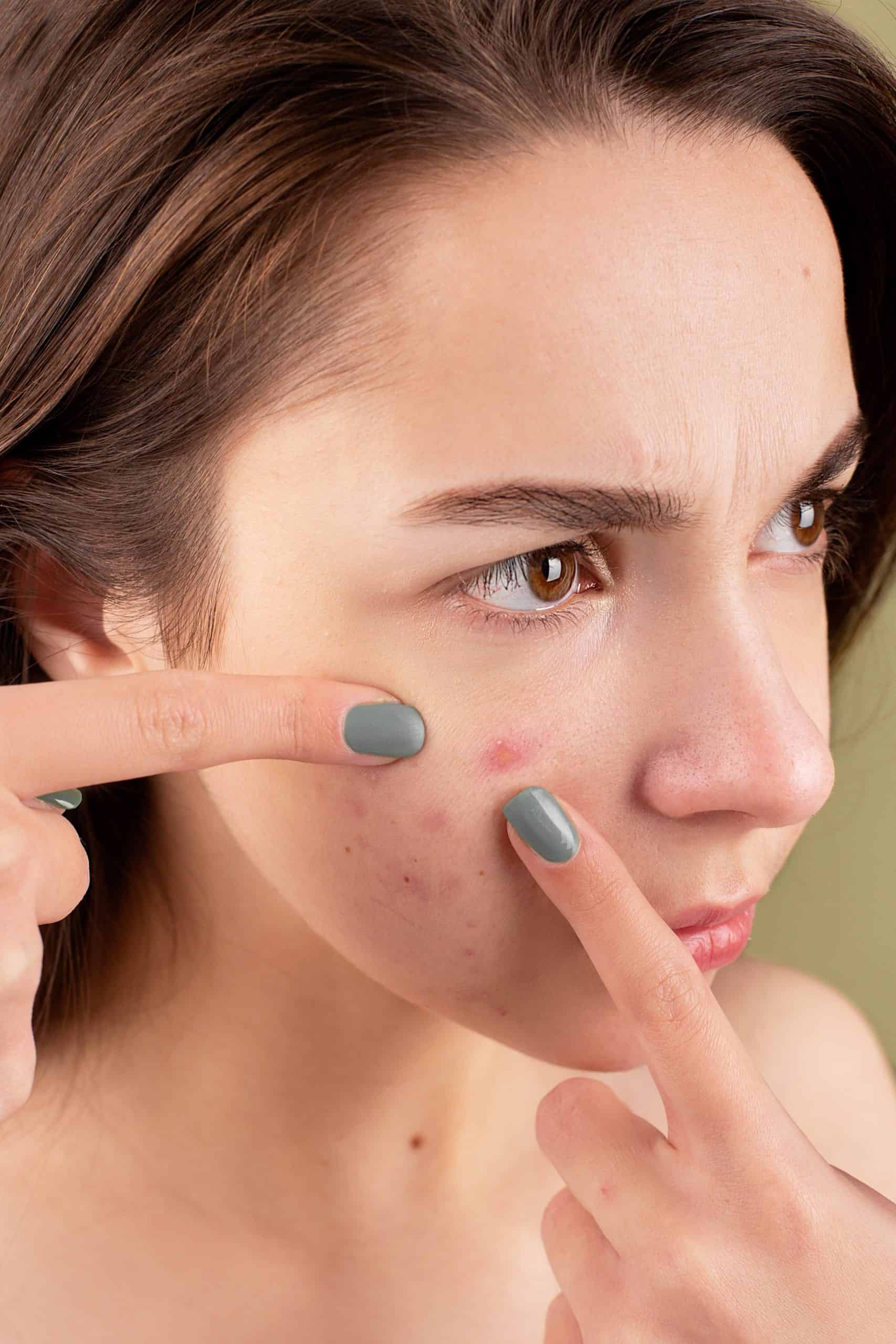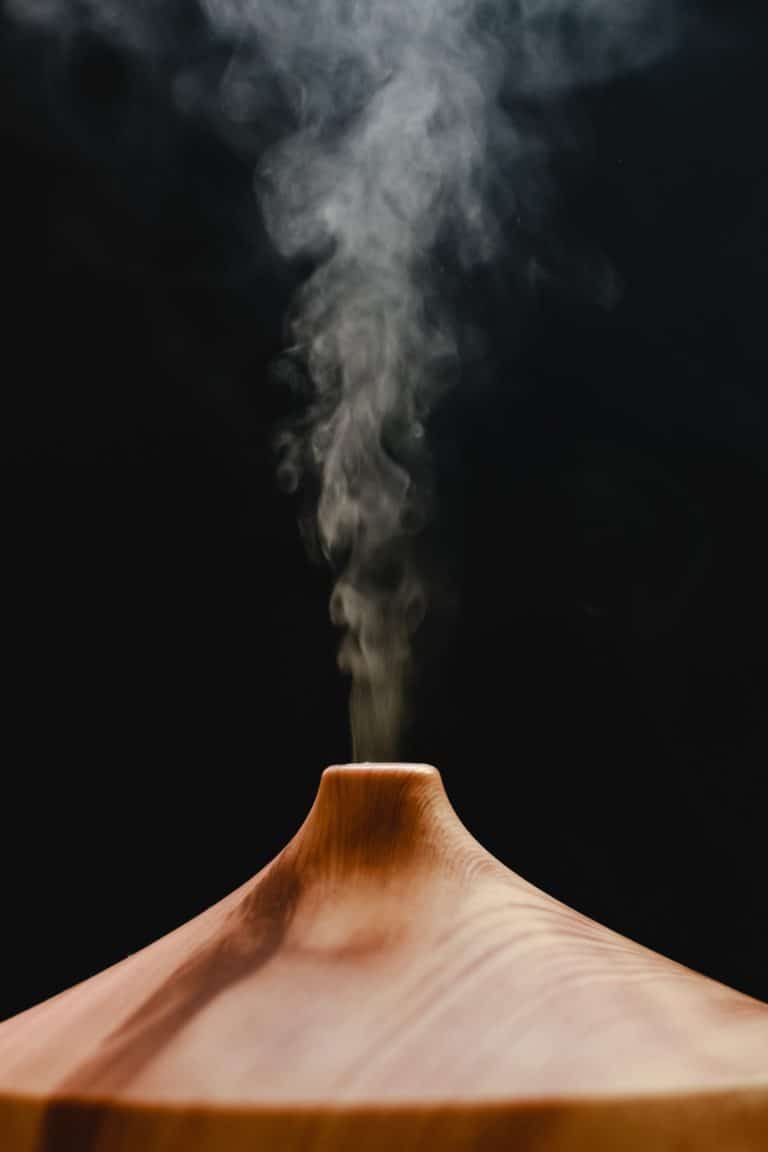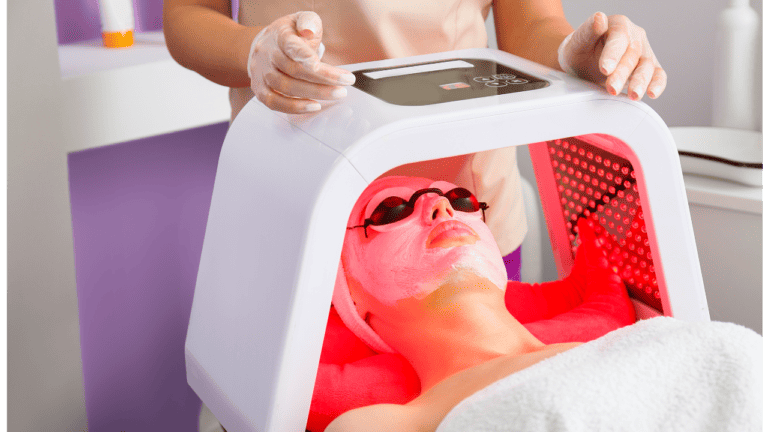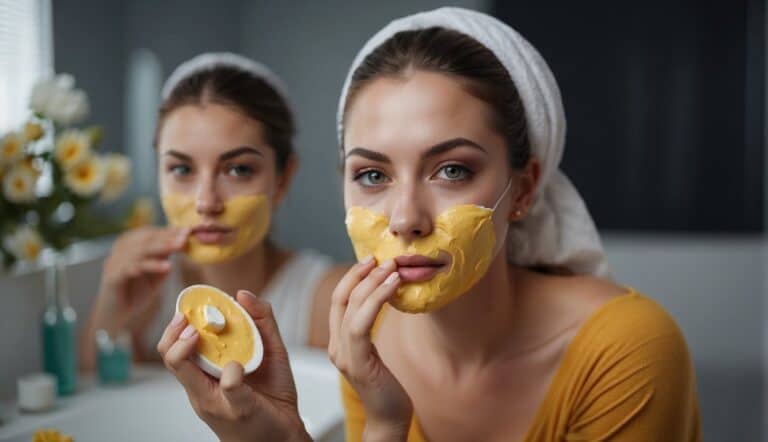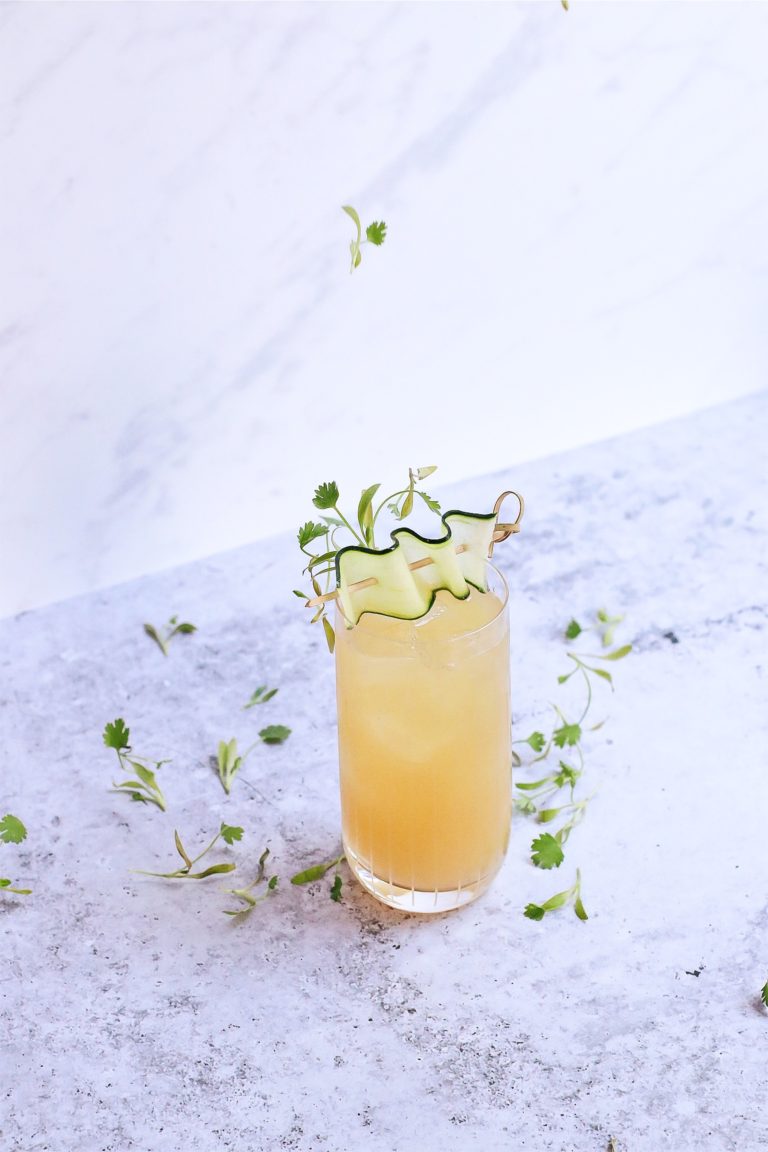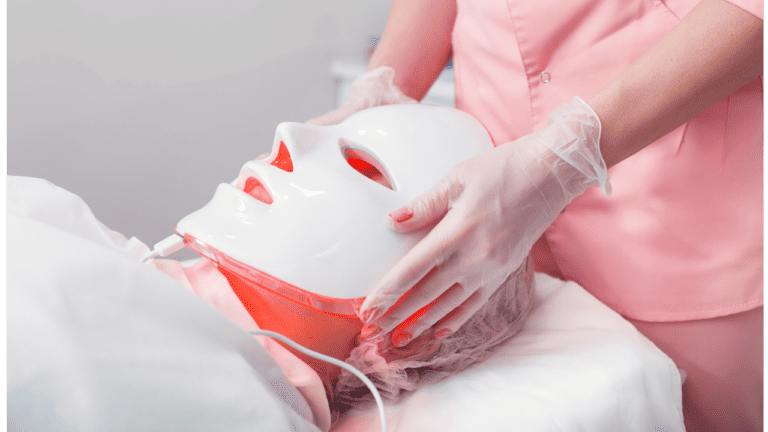If you do not pop a pimple, the pus inside the pimple will be absorbed by the body and the inflammation will gradually decrease. This usually takes about 3 to 7 days or more, depending on your body.
Of course, this process can take some time and it can be very frustrating to wait for a pimple to go away on its own. It is better to not pop it if you want to have fewer scars and chances of infection. Patience is key, and often leaving it alone is the best choice.
There are many factors that go into whether a pimple’s pus will be reabsorbed or not, and how long it takes for it to go away which we’ll explore in this article.
What happens to a pimple if it’s not popped?

Most pimples get reabsorbed and go away on their own as the body’s immune system fights off the infection and the inflammation subsides.
According to Flo Health, a whitehead pimple typically goes away within 3 to 7 days if it’s not popped. During this time, the pus inside the pimple will be absorbed by the body and the inflammation will gradually decrease.
However, if you have a deep, cystic pimple, it may take much longer to go away on its own. In some cases, it may even leave a scar behind. It’s important to resist the urge to pick or squeeze a cystic pimple, as this can cause further inflammation, and scarring and even spread the infection to other parts of your skin.
It’s also worth noting that if you don’t pop a pimple, it’s less likely to leave behind a dark spot or scar. Squeezing or picking a pimple can cause trauma to the skin, which can result in long-lasting discoloration.
What If The Pus Is Taking Very Long To Be Reabsorbed?
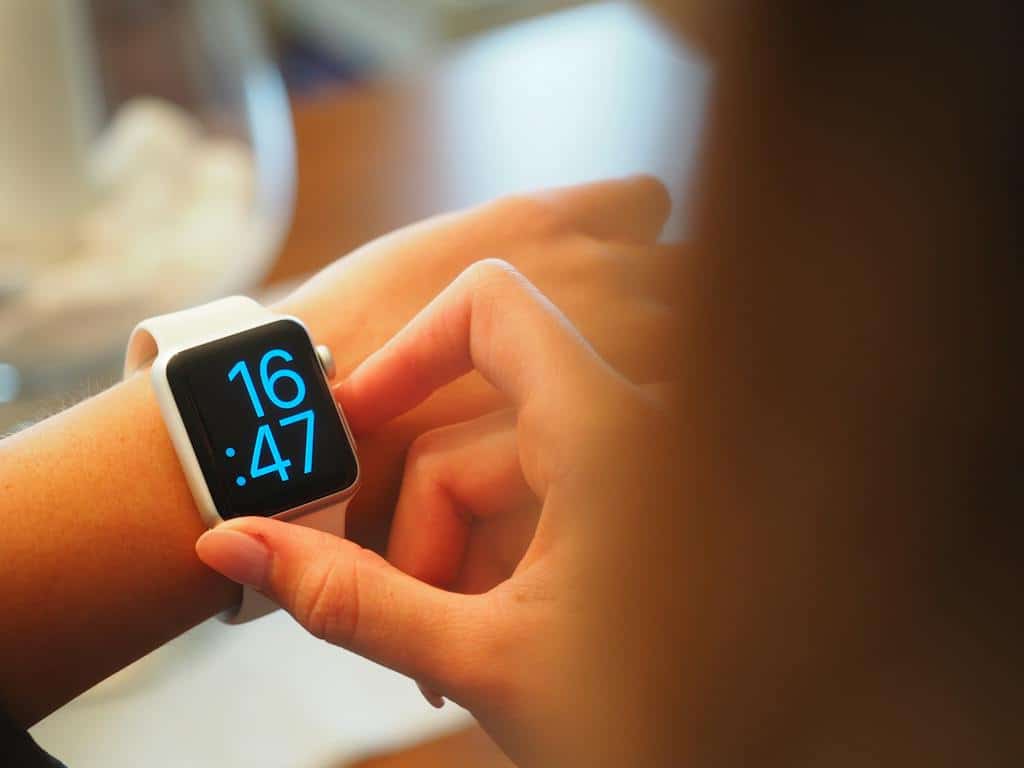
Sometimes it takes a very long time for pus to be reabsorbed, or it can also sit there and become calcified turning brown or black from oxidation. If you feel a little seed under your skin, it is most likely a malformed hair follicle that will continue to affect your skin as the years go on.
Your body understands that there is something there and the pore will likely continue to fill with pus until it is extracted because it is something that needs to be extracted.
You could go to a dermatologist to help extract it, or if you decide to do it at home, purchase an extractor and ensure it disinfects properly. Some pimples need to be popped if they have a malformed hair follicle, however, those without that will resolve on their own.
Scarring often can be prevented even if you do pop the pimple, because not all wounds become scars, just like on our body, instead it depends on how you take care of it and how deep the infection went.
How to speed up pus reabsorption
There are several methods that you can do to speed up the reabsorption of pus:
- Hold a warm compress over the area, this increases the blood flow to help remove the pus from the area.
- Do a lymphatic drainage massage with gua sha, jade roller or your hands
Why shouldn’t pop the pimple?
When you pop a pimple, you create an open wound on your skin. The bacteria that naturally live on your skin can go into the wound and cause an infection. This leads to the area around the people becoming sore, red, or inflamed. You may also develop a fever.
When you puncture the pimple’s outer skin, the pus inside the pimple can come out. However, if the bacteria in that pus splatters and lands inside other pores, it can lead to more pimples. This is because the bacteria can infect other areas of your skin.
Furthermore, when you pop a pimple, you can push the bacteria deeper into your skin. This can cause the infection to spread and make the pimple worse. Additionally, popping a pimple can cause scarring or hyperpigmentation, which can take months to fade away.
This is why it is often recommended for us to see a dermatologist, however, that is expensive and not everyone can afford to see a dermatologist regularly, especially those of us with acne-prone skin who get pimples all the time. Essentially a dermatologist will pop the pimple with tools, disinfect the area, and ensure that infection does not occur and that bacteria do not spread around.
What Does Pus In A Pimple Mean?
Pus is a thick, yellowish-white fluid that is formed in a pimple due to the body’s immune response to an infection. It is made up of dead skin cells, white blood cells, and bacteria. When the body detects an infection, it sends white blood cells to the site to fight off the bacteria.
These white blood cells, along with dead skin cells and other debris, accumulate in the pore, forming a pimple. The pus is a sign that the body is fighting the infection, and it is important to let the body do its job.
When You Should Extract Pimples When Pus Is Visible
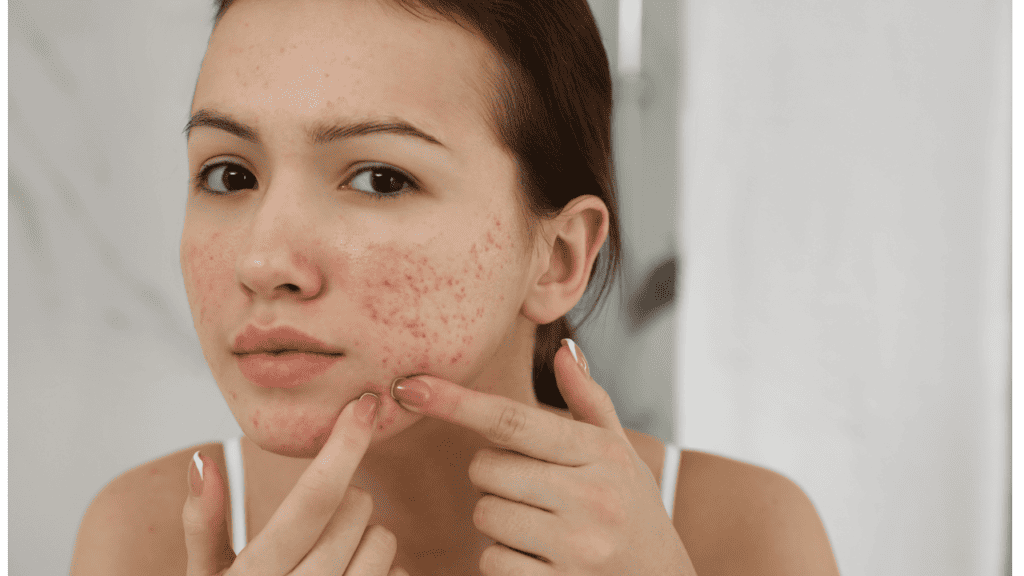
If a pimple has visible pus and is causing discomfort or pain, it may be necessary to extract it. If we think about it, the body has created pus because it has sealed off the area and sent white blood cells to combat the invading bacteria, if we extract the pus, then we wouldn’t have bacteria, dirt, and white blood cells in the pimple anymore.
I have also found that when a pimple hurts, I usually find a seed or a hard core, you can feel something inside and if I leave it alone, I find that the pimple’s pus doesn’t go away.
It’s always recommended that you go to a dermatologist if you can because they are trained professionals who can help you extract these. But, if you decide to do it at home, it’s important to be cautious and follow proper hygiene practices.
Don’t resort to using your fingers, disinfect the area around the pimple and the pimple itself, and then use a sterilized needle or extraction tool to carefully puncture the pimple’s surface. After draining the pus, clean the area once more and apply ointment to protect the wound while it heals.
In general, it is best to let pimples with pus run their course and heal on their own. This allows the body to fight off the infection naturally and helps to prevent further complications. If a pimple is causing significant discomfort or is not healing on its own, it is important to seek medical advice from a dermatologist.
Why Does My Pimple Keep Refilling With Pus?
There are times when it can be frustrating when you think you’ve successfully popped a pimple, only to have it refilled with pus shortly afterward. There are several reasons why this can happen.
Firstly, it’s important to note that when you pop a pimple, you’re not just removing the pus. You’re also damaging the skin around the pimple, which can lead to inflammation and the production of more pus. So even if you think you’ve completely emptied the pimple of pus, there may still be more lurking beneath the surface.
Additionally, if you don’t properly clean the area after you pop a pimple, bacteria can quickly move back in and start producing more pus. It’s important to use a gentle cleanser and apply a topical acne treatment to the area after popping a pimple to help prevent this from happening.
Finally, some types of pimples, such as cysts, can be more difficult to fully drain of pus. These types of pimples can also be more prone to refilling with pus, even after they’ve been drained. In some cases, it may be necessary to seek professional treatment from a dermatologist to fully remove the pus and prevent the pimple from refilling.
How to Care for a Pimple
Prevention
Preventing pimples from forming in the first place is the best way to avoid the need for treatment. Here are some tips to help prevent pimples:
- Wash your face twice a day with a gentle cleanser
- Avoid touching your face with your hands
- Avoid picking, squeezing, or popping pimples
- Avoid using oily or greasy products on your skin
- Use non-comedogenic makeup and skincare products
- Eat a healthy diet and drink plenty of water
Treatment
If you do get a pimple, there are several things you can do to treat it:
| Treatment | Description |
| Apply a warm compress | Hold a warm, damp washcloth on the pimple for 10-15 minutes, several times a day to help reduce inflammation and promote healing. |
| Use over-the-counter acne products | Look for products containing benzoyl peroxide, salicylic acid, or alpha-hydroxy acids, which can help unclog pores and reduce inflammation. |
| See a dermatologist | If your acne is severe or not responding to over-the-counter treatments, a dermatologist can prescribe stronger medications or perform procedures like extractions or chemical peels. |
Remember, it’s important to avoid picking, squeezing, or popping pimples, as this can lead to scarring and delay the healing process. Instead, be patient and consistent with your skincare routine, and seek professional help if needed.
How To Care For A Popped Pimple
If you have already popped a pimple, it’s essential to take care of the affected area to prevent further infection and promote healing. Here are some tips to help you care for a popped pimple:
- Cleanse the area: Use a gentle cleanser to wash the area around the pimple. Avoid using harsh scrubs or exfoliants, which can irritate the skin and cause further inflammation.
- Apply a warm compress: To reduce inflammation and promote healing, apply a warm compress to the affected area. Soak a clean washcloth in warm water and place it on the pimple for 10-15 minutes, several times a day.
- Avoid touching or picking at the area: It’s crucial to avoid touching or picking at the area while it heals. Picking at a scab or a healing pimple can cause further damage to the skin and increase the risk of infection.
- Apply an antibiotic ointment: To prevent infection and promote healing, apply an over-the-counter antibiotic ointment to the affected area. Be sure to follow the instructions on the package and apply the ointment as directed.
- Keep the area moisturized: After cleansing and applying an antibiotic ointment, it’s important to keep the affected area moisturized. Use a gentle moisturizer to prevent the skin from drying out and to promote healing.
Remember, it’s always best to avoid popping pimples whenever possible. But if you do pop a pimple, be sure to take care of the affected area to prevent further infection and promote healing.
